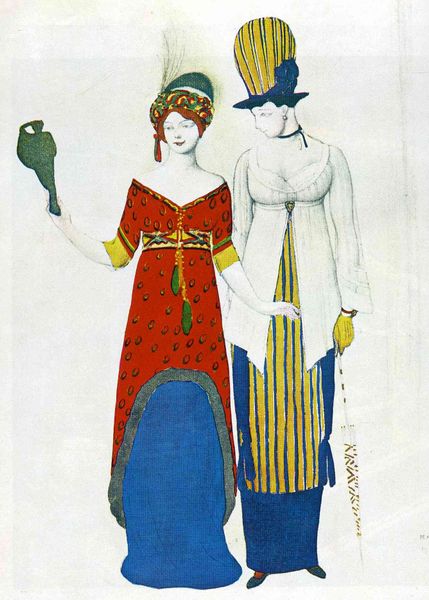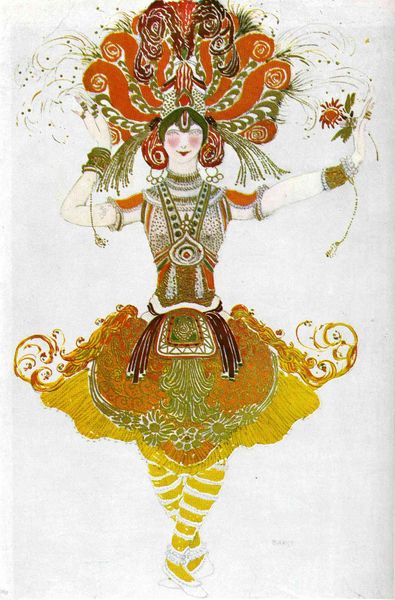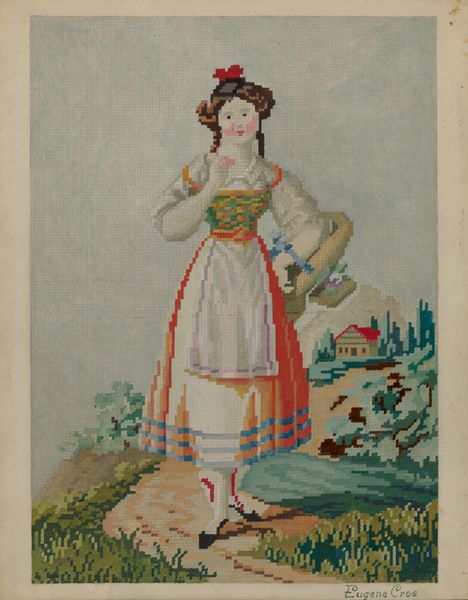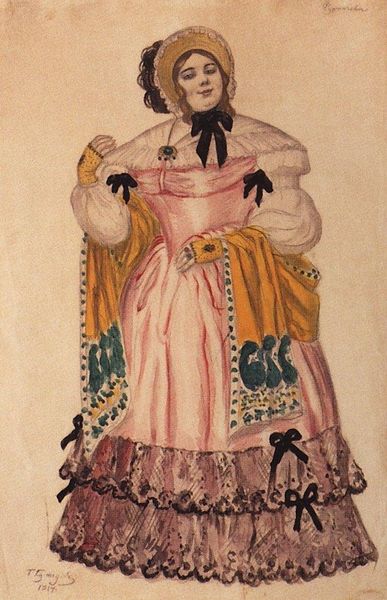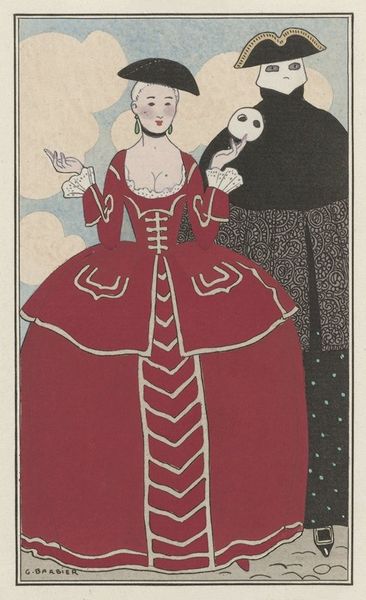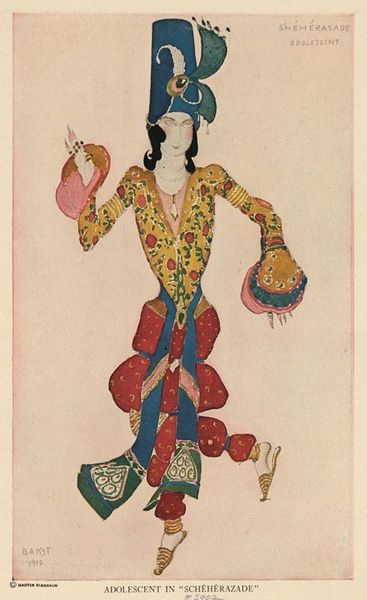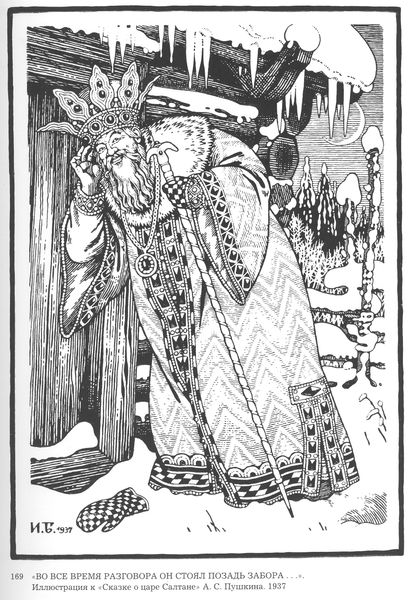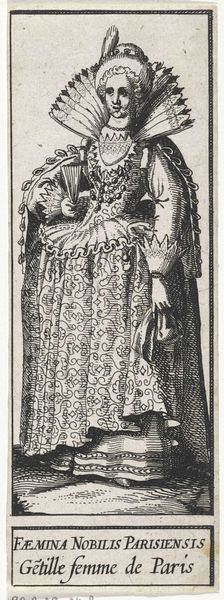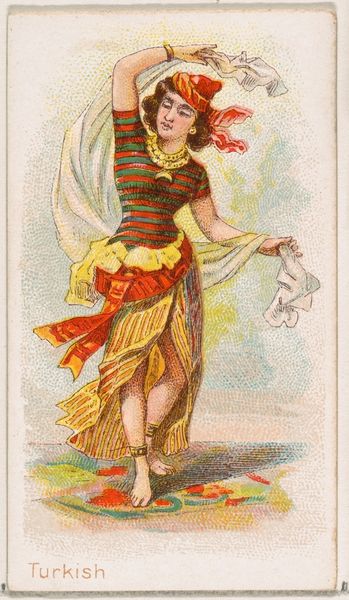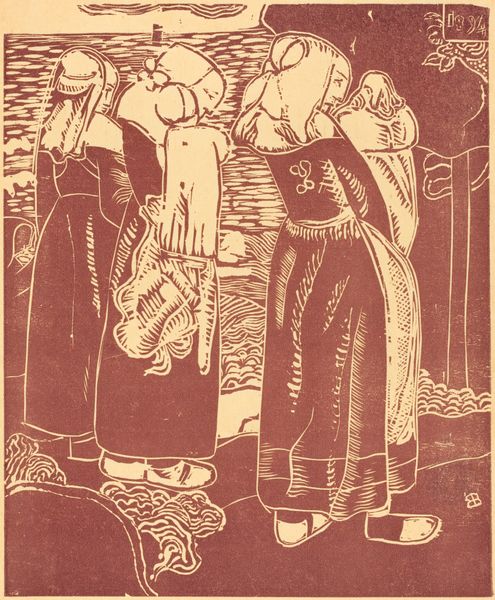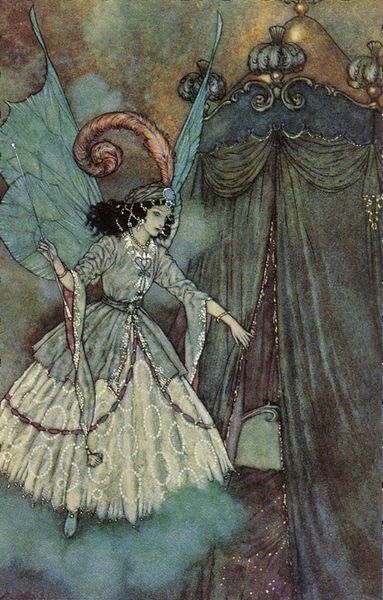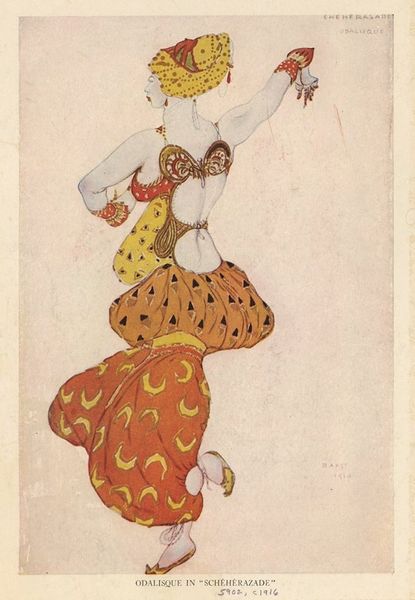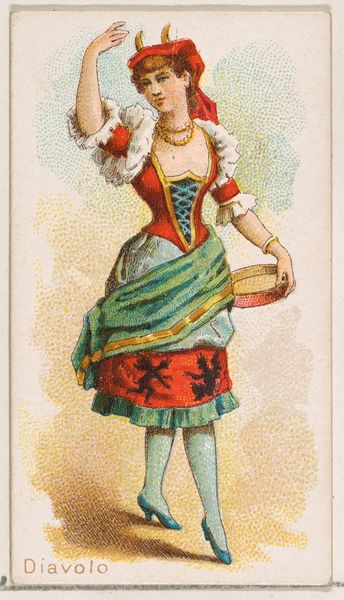
painting, watercolor, impasto
#
portrait
#
painting
#
watercolor
#
impasto
#
folk-art
#
costume
#
russian-avant-garde
#
watercolor
Copyright: Public domain
Editor: Here we have Konstantin Korovin’s 1913 watercolor, "Tmutarakan." There's almost a raw, unfinished quality to it, but the costumes pop with detail. What draws your eye in this piece? Curator: It feels like stumbling upon a forgotten postcard from a vibrant, theatrical past. For me, the real magic lies in that tension you mentioned. Korovin, flirting with the Russian avant-garde, captures not just figures but a sense of fleeting movement, like a backstage glimpse during a frantic costume change. Do you see how the impasto technique in the watercolor almost gives a tactile dimension to the fabrics? Editor: I do, the texture really brings the costumes to life. What’s the story behind these particular outfits? Curator: Ah, now there’s a delightful riddle! "Tmutarakan" itself was an ancient Russian city, a crossroads of cultures. Korovin, steeped in folk art, probably designed these costumes for the stage, perhaps a ballet or opera evoking a romanticized version of old Russia. Each carefully rendered detail, from the headdresses to the embroidery, whispers of tradition. Isn’t it amazing how art can be both deeply rooted and daringly modern at once? Editor: It is! It’s like he’s trying to capture a feeling more than historical accuracy. Curator: Precisely! More mood than method, you might say. And that's what makes Korovin so appealing, he invites us to dream along with him. So, what's your take-away now? Editor: I definitely see that dream-like quality now. It’s not just a costume sketch; it’s an invitation to imagine a whole world. Curator: I'm so glad we uncovered that little enchantment together. It makes me want to start sketching something magical myself.
Comments
No comments
Be the first to comment and join the conversation on the ultimate creative platform.
